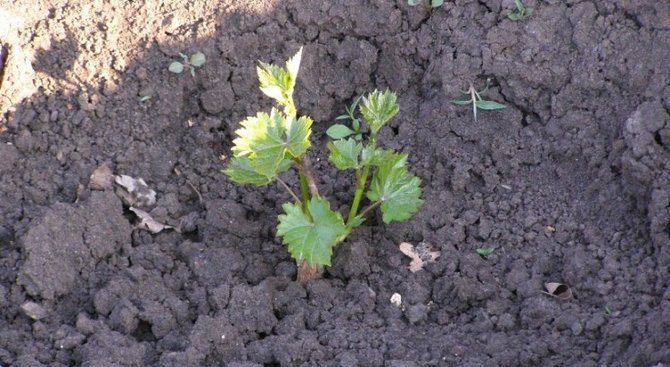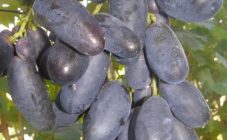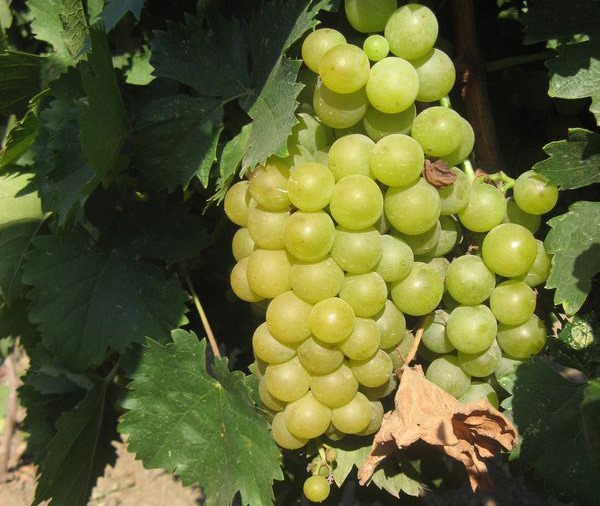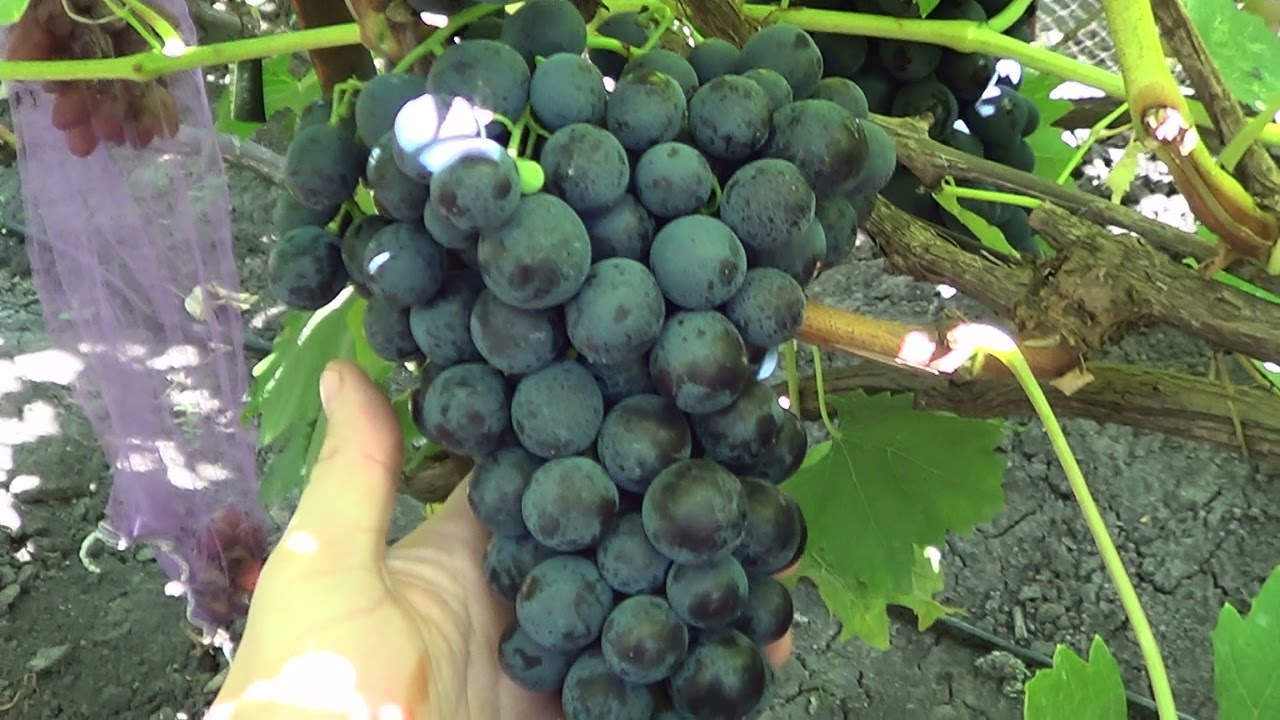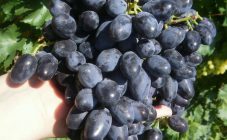Content:
Viticulture is one of the most popular areas of agriculture. Moreover, vineyards are grown not only on an industrial scale; many summer residents also allocate places for grapes of different varieties on their plots. But, already having high-yielding grape bushes in the garden, you always want to plant something new. As an option - Viking grapes. This is one of those hybrids that amazes with the taste of ripe bunches, high commercial qualities, and the ability to keep the harvested crop for a long time.
The history of the creation of the variety
Viking grapes are another successful development of the breeder from Ukraine V.V. Zagorulko. To breed it, the scientist crossed ZOS and Codryanka grapes. The resulting hybrid, in addition to large clusters and sweet, large berries, has one more advantage - a persistent aroma.
Due to its undeniable advantages, this hybrid has become popular not only among Ukrainian winegrowers; over time, Viking grape seedlings began to be planted in southern Russia. Gradually, this variety spread to other regions of our country, and today it can be found in the middle lane and the Moscow region.
The vines have tall bushes, strong erect shoots with great vigor. It is characteristic of this hybrid that the shoots of the current season ripen by almost 100% by autumn.
The foliage is large, each leaf consists of 5 lobes, attached to the petiole of medium length.
The brushes are cone-shaped, quite dense, but the berries are not subject to deformation. The mass of one brush ranges from 450-850 g. Fruits are oval, slightly elongated. The weight of one berry is 5-7 g. The pulp is of medium density, slightly crispy, sweet with a characteristic acidity. The skin is also of medium density, dark blue to almost black color. The fruit is often attacked by wasps due to its aroma during ripening.
But the brushes, even after ripening, can hang on the shoots without losing their presentation and taste. There were cases that the bunches were harvested at the end of September without bursting and remained juicy and tasty.
The harvested crop tolerates long-distance transportation, therefore, the bunches of varietal grapes are in high demand among buyers.
Viking grape variety: description, planting
Vinograd Viking is one of the early ripening hybrids - 3.5 months pass from the appearance of the first leaves to harvest. Ripe brushes can be collected from the first days of August.
The description of the Viking grape variety should start with a story about planting young plants. Cuttings of this hybrid are characterized by almost 100% rooting. The adaptation of seedlings takes place quickly within 10-13 days, then the bushes begin to actively increase their mass, turning into a sprawling bush plant by autumn. The hybrid begins to bear fruit from the third year after planting. The variety is self-pollinated, because the flowers of the female and male types bloom on the shoots at the same time. And therefore Viking is perfect as a pollinator for those varieties on which only female flowers appear.
Viking's resistance to frost is average, it can withstand temperatures down to -20 ° C, so it is very difficult to grow this variety in the Urals or Siberia, because even with shelter for the winter there is no guarantee that the bushes will not freeze.But in the conditions of the middle lane, summer residents, subject to the rules of autumn pruning and carrying out covering measures, get good yields. Not only the shoots themselves, but also the fruit buds have to be protected from frost. If the latter perish, the grapes will not deform.
The most optimal conditions for growing this hybrid are in the southern regions of our country. In these areas, winters are warm, so the plants do not need sheltering.
The characteristic of the variety will be incomplete without a story about the relationship between irrigation and the ripening of the crop. Viking reacts negatively to increased moisture in the soil and environment. If it is rainy, wet weather or groundwater is close to the surface, the berries can crack and rot. At a high air temperature and humidity of more than 75%, there is a threat of damage to shoots by fungal diseases. If this weather begins, then gardeners should start prophylactic spraying of grape bushes from all types of rot.
Agricultural technology of cultivation
The selection of a site for planting Viking cuttings is an important stage for laying the future harvest. The soil should be fertile, as in areas with depleted soil, the berries will lose their taste and unmatched fruity aroma. The best place for a vineyard would be black soil with a sufficiently deep groundwater table. In swampy areas, Viking grapes will not be able to grow, since this type of soil will destroy it.
It is best to plant a vineyard on the south or southwest side of the summer cottage, placing the beds from north to south. And it is necessary to provide in advance for the protection of grape bushes from gusts of cold winds.
The best time to plant seedlings is spring, when the soil temperature is 16 ° C. Some gardeners recommend planting grape cuttings in the autumn, but this should be done no later than mid-September so that the bushes have time to take root and stock up on nutrients for the winter.
Since the bushes of this variety are distinguished by an increased vigor of the growth of shoots, it is necessary to make the distance between the planting pits at least 2.5-3 m. In warm soil, the roots quickly take root, rarely get sick.
When choosing seedlings, you need to carefully examine their root system. It must meet the following requirements:
- be healthy and strong;
- the thickness of the roots is not less than 2.5 mm;
- the roots do not break when touched.
The cuttings should have at least 4-5 healthy buds on the shoots. Before planting, the seedling is placed for 0.5 hours in a growth stimulator solution.
Detailed step-by-step instructions on how to plant a Viking grape stalk:
- First, a hole is dug with a diameter of 0.8 m and the same depth. The bottom layer in such a pit is made from equal parts of black soil and humus (0.25 m). The next layer is a mixture of soil with 1.5 tbsp. potassium salts and the same amount of superphosphate (5 cm).
- A mound is formed in the center of the pit, on which the handle is installed, and its roots are gently straightened along the slopes.
- The pit is covered with fertile soil and lightly tamped. Pour 30 liters of water under each stalk. When the moisture is absorbed, the surface around the seedling should be slightly loosened. The next watering is carried out at intervals of 10-14 days.
- Further care for growing grape bushes consists in regular watering, periodic top dressing, formative pruning and mandatory shelter for the winter in the middle lane and other regions with a similar climate.
Advantages and disadvantages of the variety
Summing up the article, we can highlight the main advantages of this variety:
- early maturity of the hybrid;
- the variety does not need pollinating neighbors, as it has flowers of both sexes;
- itself is a good pollinator;
- great taste of ripe berries;
- high commercial qualities;
- the harvested crop tolerates transportation well, without losing its presentation and taste.
But this hybrid also has negative sides:
- the variety does not tolerate severe cold and heat;
- when the soil is waterlogged, the berries can crack;
- low resistance to fungal diseases and rot;
- yields are below average.
Many gardeners believe that the Viking hybrid is too moody. However, those who have at least once harvested from the bushes of this variety will definitely offer cuttings to their neighbors and friends for growing.


